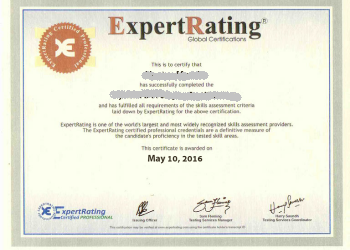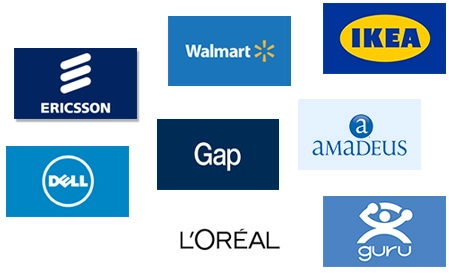Form Versus Function
This course is different from most web creation courses you'll find because it's not designed to teach you the mechanics of creating a web page or how to use a particular software program. Instead, it's designed to help you take your website creations to the next level by enhancing both design and functionality. You'll discover what attracts visitors to a website, and how to use design tools such as typography, Cascading Style Sheets (CSS), and multimedia to captivate visitors and keep them coming back.
Website Planning Process
Visitors are attracted by good design, but content is what keeps them at the site longer and motivates them to return. Learn how to use two tools to attract and retain visitors: design critiques and a content inventory. Explore the six major development stages that yield expert design and smart content. Then study the three parts of web design and the skills you'll need for each.
Interface Design
By now, you probably understand that an interface is the screen visitors see and use when they visit any page of your site. Designing an interface is easy. Designing an effective interface, however, is more challenging. There are four main elements that you'll need to consider to make your site user-centric: usability, visualization, functionality, and accessibility. Explore each of these elements to see the thought that goes into effective interface design.
Site Structure
Even if your basic content is accurate, attractive, and well written, your site won't function well without a solid and logical organizational foundation. Review the five basic steps involved in organizing information and four essential structures that you can use to build a website. Then learn how to create a flowchart for the pages you want to include on your site.
Site Design
Websites exist to inform, educate, persuade, or entertain. Take this opportunity to concentrate on site design themes that pay attention to information delivery. Learn how to organize elements in order to enable visitors to accomplish their own goals. Explore usability, content, and design.
Page Design
Discover how you can use visual and graphic design, page layout, and grids to take your designs to the next level. At the same time, become familiar with design considerations like visual hierarchy, page dimensions, and white space.
Typography on the Web
Typography plays a dual role by providing both verbal and visual communication. Almost any type of font will do to transmit information to others. But to convey the right type of mood along with the information takes a special type and color of font. Learn all the secrets here!
CSS and Font Embedding
Find out how you can use Cascading Style Sheets to modify fonts. Become familiar with inline, document-level, and external (linked) style sheets, and learn how to create an external CSS file to control the formatting of any or all pages on your site. You'll also take a look at some early font embedding techniques and explore two popular Flash-related options currently in use.
Writing for the Web
Before you write for the web, you should take the time to understand how people read online. Become familiar with the use of titles, headlines, and subheads to assist readers in navigating your site. Discover the advantages of using a web content management system. Learn how you can communicate more easily and informally with web visitors by adding a blog to your site.
Images, Colors, and Layers
You can use images to add interest to your site and to help with navigation. Early designers were limited graphically by HTML attributes, and later designers discovered they could use tables to place images. Today's designers also use CSS to add styles to their text and images. As fun as CSS can be, you also have to take accessibility into account so that users with older browsers or screen readers can still navigate your website.
CSS Positioning: More Layers
The combination of HTML, CSS, and JavaScript allows you to create intensely interactive web applications similar to any game or presentation built with traditional programming languages. This interaction of HTML, CSS, and JavaScript is known as Dynamic HTML or DHTML. Become familiar with the basics of DHTML, including code you can use to enhance your designs by adding layers to your pages.
Web 2.0 and Beyond
Early websites were created by a few to be read by many. Over the years, developers added interactivity to websites through discussion forums, chat rooms, and shopping carts. These features are part of what might be called "web 1.0". Today the focus has shifted from the sponsor of the site to the visitor, and sites like Flickr and YouTube are popular. They're examples of web 2.0 sites. Examine several popular web 2.0 sites, and take a look ahead to web 3.0.



